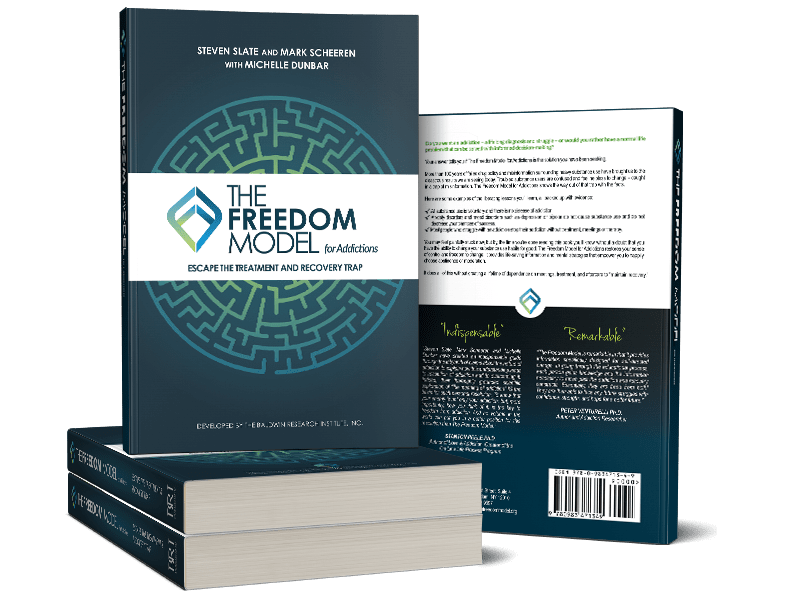You Asked, We Answered
Addiction Questions
I have a son in college who has been struggling with what we think is a Xanax addiction. At least that what we think it is. How do we get him into a rehab when he has told us he doesn’t have a problem? Can we force him to go?
This is a common question. As you will read below, much of how and what parents feel in regards to a child’s issues may be heavily influenced by the recovery society’s insistence on portraying the worst of a parent’s fears. This is not helpful. So our answer is to know the facts first. This can be accomplished by reading the entire book, The Freedom Model for Addictions. Then, after understanding the facts, you can better evaluate the situation. Below is a brief excerpt from The Freedom Model that puts some of this situation in a more helpful light as a starting point:
“University students are surrounded by peers who see nothing wrong with this style of drinking. The parents aren’t there to hover, disapprove, and freak out. Many administrators simply look the other way, understanding that this drinking is just a part of college life. In short, the playground effect is noticeably absent from this environment. Most college drinkers never get the message that their wild drinking is dooming them to a life of alcoholism.[1]
Like the child happily running around on the playground, they usually take their knocks without much ado. Although they fit the diagnosis, most of them never seek help because they haven’t learned to think of themselves as needing it. Most never see their drinking as a big deal so they quite naturally outgrow it. After 22 years of age, this style of drinking begins a rapid decline such that, by 30 years of age, only 6% to 7% fit the diagnosis (SAMHSA, 2014). With no one to send the message that they’re doomed to a life of alcoholism, they don’t blow things out of proportion; most naturally tire of this drinking and move on with their lives.
Ironically, many of the parents who send their children to rehabs have been through a stage of “addiction” themselves and naturally outgrew it. We hear it all the time from callers seeking help at our retreats. Typically, they caught their college-aged son (or daughter) with some drugs, or he got in trouble at school for drinking. They immediately shipped him off to a rehab. He gets out and either escalates his use, or they suspect he’s used drugs again (even if no real problems have occurred because of it). So they look for more help and call us. They tell us things like “It’s serious; he’s gonna die; addiction runs in our family, and I wanna nip this in the bud. My father drank a lot, and when I was in college I had a huge cocaine problem.” Then we ask the parent, “So how did you quit doing cocaine?” We’ve gotten this same answer back so many times that it’s absurd: “Well, I got out of school, moved out on my own, and it just wasn’t as exciting as it used to be and cost a lot. I gradually did it less and less until I just decided I was done with it.”
They’re convinced that their son’s problem will end tragically and that he’s unable to stop despite the fact that they had a big drug habit at his same age and easily stopped it without professional help or a lifetime of meetings. No one had intervened with them, and yet they turned out fine. But not only are they intervening and teaching their son that he’s an addict with an incurable disease; they’re also ready to put him right back into another rehab the moment he so much as takes a puff off a joint. We have seen many of these cases get worse and worse because everyone blows it out of proportion, and sadly sometimes, the college student ends up becoming a 40-year-old child who has spent 20 years in and out of rehabs. These cases are the most direct example of the playground effect—a paranoid parent observing a child, but they’re both a little older now and the playground is a college.
To be crystal clear, we’re not saying there isn’t a legitimate problem in any of these cases. What we’re taking issue with is how the problem is defined. The parent in our last example probably didn’t define her cocaine problem in her youth as an addiction at the time. She defined it as “using too much cocaine.” She decided to cut down to use the money she was spending on cocaine for something she cared about more, such as paying rent, a car payment, or electric bill or whatever her other needs and desires were. Her definition allowed for a simple, straightforward solution. What the observers in our other examples are doing is defining drinking too much as involuntarily drinking and needing professional help to make sure you never drink again. They’re defining it in a way that is both inaccurate and unhelpful and leaves the individual living in fear, self-doubt, and panic. This redefinition compounds the problem. It is directly analogous to the bump on the knee being redefined as a life-threatening tragedy that requires a trip to the hospital, and it goes a giant step further in prescribing a lifetime of daily effort to avoid playgrounds altogether.”
[1] We’ll note that this trend of looking the other way is currently changing; as the recovery society is setting up services in many colleges in recent years called “recovery campuses” or “sober dorms,” and acknowledge that within a few years, this long-standing example may become obsolete. Such is the rapid growth and reach of recovery ideology.


0 Comments